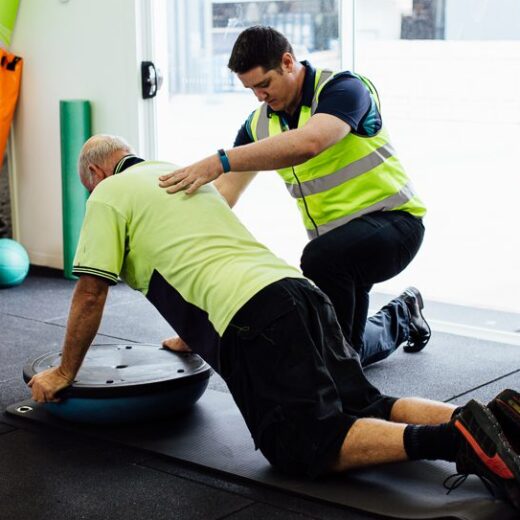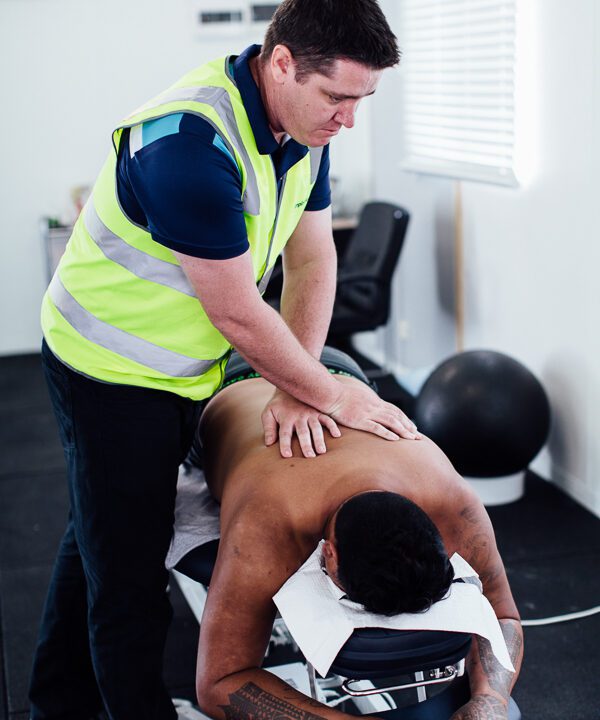
Mid-Year Health Check-Ins – Fit For Life
Give your team the reset they need with onsite wellness screening The middle of the year is the perfect time to check in, not just...
Read moreMusculoskeletal disorders are a priority in managing workplace injuries as they often contribute to a large number of injuries and are preventable. Some businesses might be at higher risk of musculoskeletal injuries in the workplace with high levels of manual handling work and low opportunities for task rotation.

Musculoskeletal conditions comprise more than 150 conditions that affect the locomotor system of individuals. They range from those that arise suddenly and are short-lived, such as fractures, sprains and strains, to lifelong conditions associated with ongoing functioning limitations and disability.
Musculoskeletal conditions are typically characterised by pain (often persistent) and limitations in mobility, dexterity and overall level of functioning, reducing people’s ability to work. Musculoskeletal conditions include conditions that affect:
Musculoskeletal conditions are also the highest contributor to the global need for rehabilitation. They are among the largest contributors to the need for rehabilitation services among children and account for approximately two-thirds of all adults in need of rehabilitation.
Certain workplace conditions, for example, the layout of the workstation, the speed of work (especially in conveyor-driven jobs), and the weight of the objects being handled influence these factors. In other situations, the psychosocial factors at the workplace may contribute to WMSDs. It is recommended that both physical and psychosocial factors be addressed.
Repetitive movements are especially hazardous when they involve the same joints and muscle groups over and over and when we do the same motion too often, too quickly and for too long. Work involving movement repeated over and over is very tiring because the worker cannot fully recover in the short periods of time between movements. Eventually, it takes more effort to perform the same repetitive movements. When the work activity continues in spite of the fatigue, injuries can occur.
With more employees sitting longer at computers and other workstations, this is more important than ever to avoid chronic health issues. Ultimately, adjusting office ergonomics is a way to keep your employees safe. If your workers don’t have safe, effective equipment to work with — like a comfortable chair or a back brace — it can lead to a hurting, less productive employee.
Poor posture, in particular, can cause a multitude of health issues as it puts extra stress on joints and muscles. This leads to overwork and fatigue, which can cause chronic pain. As a result, musculoskeletal disorders (MSDs) may pop up — like tendonitis or carpal tunnel. These disorders can impact muscles, blood vessels, nerves, ligaments, and tendons.
Pressure at the workplace is unavoidable due to the demands of the contemporary work environment. Pressure perceived as acceptable by an individual may even keep workers alert, motivated, able to work and learn, depending on the available resources and personal characteristics. However, when that pressure becomes excessive or otherwise unmanageable it leads to stress. Stress can damage an employees’ health and degrade business performance.
Low job control can be characterised by situations where:
Fill out the form below to get started, or call us on 1300 367 519.
Workplace Musculoskeletal injuries can occur due to both psychosocial and physical stresses, both of which need to be addressed through a holistic program.
At Employ Health we offer a range of services which can assist with managing and preventing your workplace musculoskeletal injuries, below are a few examples:
Ergonomic assessments can reduce the chance of injuries occurring, by ensuring that workers are using correct manual handling and ergonomic techniques. Often by addressing a workers movement habits or postures we can assist in offloading or correctly using particular muscles, which might be contributing to the musculoskeletal injury.
Read moreEarly intervention physiotherapy can assist in managing workplace musculoskeletal injuries by ensuring the correct Physiotherapy treatment and exercises are prescribed at the right time, ensuring workers duties are appropriate and non-aggravating, as well as working on prevention and functional strength with individuals
Read morePsychological risk assessment tools can be conducted by EmployHealth physiotherapists in order to assist in understanding where risk may be present and best address interventions.
Read moreMusculoskeletal disorders can be prevented by ensuring improved work techniques and analysing tasks with risk assessments utilising the hierarchy of controls. Proper stretching and dynamic warm ups can assist with reducing injury, managing and intervening with injuries early on can assist in ensuring the proper recovery and preventing re aggravation. Education and manual handling training/office ergonomics can also assist in reducing injury rates.
Musculoskeletal injuries can be caused by a range of factors including bone fractures, joint dislocation (when something forces a joint out of its proper position), direct blows to muscles, bones or joints, overuse injuries, repetitive sprains and strains and poor posture.
Musculoskeletal injuries can often lead to claims and reduce workers productivity and increase absenteeism.

Give your team the reset they need with onsite wellness screening The middle of the year is the perfect time to check in, not just...
Read more
Why regular training is key to a safer, stronger workforce Manual handling injuries are one of the most common—and preventable—workplace hazards in Australia. Whether your...
Read more
How employers can support prevention, early detection, and healthier teams Diabetes is one of Australia’s fastest-growing chronic health conditions, and its impact reaches well into...
Read more
Every July, thousands of Australians take a break from alcohol to raise funds for people affected by cancer. But Dry July isn’t just a...
Read more
Safeguarding sensitive workplace data is no longer optional, it is essential. With cyber threats on the rise and regulatory changes looming, Australian businesses must...
Read more
Navigating the Rising Threat Landscape In today’s digital age, data security has become a paramount concern for Australian businesses. The increasing frequency and sophistication of...
Read more
What They Are and How to Manage Them in Your Workplace Mental health and wellbeing have become essential conversations in modern workplaces – not just...
Read more
Ways Your Business Can Make a Difference This June June is Women’s Health Month, a time to recognise, celebrate, and support the health and wellbeing...
Read more
May is Addiction Awareness Month—a time to shine a light on the habits and dependencies that affect the health, wellbeing, and performance of workers...
Read more
Manual handling is a part of everyday work across countless industries – from construction and warehousing to healthcare and hospitality. But it’s also one...
Read more
Drug and alcohol use in the workplace is more than just a safety issue—it’s a health, productivity, and culture concern. Having a structured workplace...
Read more
Quitting smoking is one of the most impactful health decisions a person can make—but it’s not easy to do alone. As a business, the...
Read moreCan’t find what you’re after?
View all articles